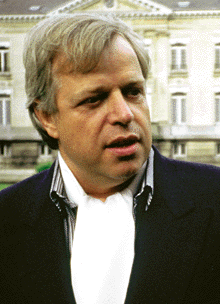|
Question:
Herr Huebner, you are a classical composer; how
does this craft benefit you in the drawing up of the harmonic information
in your Micro Music Laboratories?
Peter
Huebner: Very much. The harmonic investigations
in the microcosm of music lead us right into the centre of the craft
of our greatest classical sound creators. As I have already explained
elsewhere, we can view our musical history - i.e. that of Europe, especially
of Germany and still more particularly of Thuringia - as a process of
cognition in terms of the laws of harmony of the microcosm of music.
In doing so we must not take too narrow a view of the historical aspect
since, up until Bach, this harmonic cognition process saw its greatest
progression, whilst after Bach it already went into decline again.
Question:
Does this decline explain the 'salvationist' leap
into atonality?
Peter
Huebner: Without
a doubt! It became more and more apparent to composers that they had
lost the spontaneous internal access to harmony and, for atonal music,
one does not need such access.
Bach's music,
and indeed the music of his time, demonstrates the highest degree of
cognition in terms of the laws of harmony of the microcosm of music
in our European music tradition, since these sound creators developed
the highest artistic craft in working at one with these natural laws
of harmony.
In saying
this, I do not wish to imply that this artistic craft is finished and
cannot be further developed, rather that, historically, this was the
time when the greatest insight into the laws of harmony of the microcosm
of music can be proven, and that this insight has since been in general
decline right up to modern times.
Question:
Can you explain that in more detail?
Peter
Huebner: Let
us take, for example, polyphony, the counter point, the art of the fugue.
In Bach's time, dealing with these compositional elements was, for him
and his colleagues, still something completely natural. It was clear,
too, that these compositional methods only made sense with harmonic
music, and also that it was only here that they could be viewed as artistic
craft. After Bach, however, the artistic craft of polyphony lost its
pre-eminence in music and simple homophony became more and more widespread:
the melody with added accompaniment came to the fore. |






